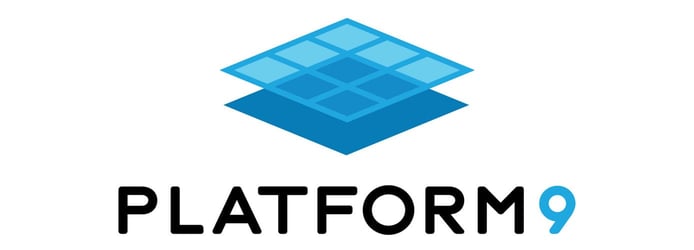
TL; DR: Platform9, launched in 2013 by VMware engineers, allows businesses to run and scale private and edge clouds on their existing hosting infrastructure, whether on-prem, in the cloud, or at the edge. By offering a public cloud-like consumption model for the datacenter, the company empowers users to reduce operational complexity and increase agility. With plans to extend its services to the telecommunications industry, Platform9 aims to make SaaS-based infrastructure management accessible to an even greater customer base.
Like many acronyms, SaaS (short for Software-as-a-Service) is an intimidating-sounding reference to a commonly used technology. If you have a computer or smartphone, you’re likely using SaaS solutions daily — and for good reason.
The technology-licensing model allows users to conveniently access up-to-date software through the internet, rather than require users to install and maintain it themselves. Because on-demand SaaS solutions are centrally hosted and licensed on a subscription basis, they’re also more flexible and affordable.
Popular SaaS products include Google Workspace (formerly G Suite), Dropbox, Zoom, Salesforce, Office365, and Adobe Creative Cloud. When it comes to SaaS infrastructure, public clouds like Amazon Web Services (AWS), Google Cloud Platform (GCP), and Microsoft Azure reign supreme.

Platform9 is a SaaS-managed hybrid cloud solution.
But while public cloud infrastructure providers offer a streamlined user experience free from the complexity of operating and managing servers, many IT teams are deeply tied to their legacy systems. Others want to avoid entrapment in the walled gardens of tech giants, where service providers maintain ultimate control over resources.
The two courses of action many sysadmins face — struggling with slow, expensive legacy hardware or submitting to the confines of public cloud providers — are equally unpleasant. Fortunately, IT teams now have a third option in Platform9.
“Platform9 pioneered what we call SaaS management of infrastructure,” said Kamesh Pemmaraju, Product Marketing at the company. “With this model, we take the control plane of the public cloud, but apply it to infrastructure anywhere. You bring your own infrastructure, plug it in, and within a few minutes, log into a browser for that scalable, public cloud experience on your own hardware.”
Founded in 2013 by Leaders in the Virtualization Industry
Platform9 was founded eight years ago as cloud computing platforms like AWS, GCP, and Microsoft Azure were beginning to hit their stride.
“The founders, who were early VMware engineers and involved in products like vCloud Director and vSphere, noticed that even though cloud solutions were taking off, there was still a lot of on-premises infrastructure and traditional datacenters,” Kamesh said. “They realized that the economics and the agility of these two spaces were worlds apart.”
With AWS and similar platforms, sysadmins could access scalable infrastructure with little more than a computer and credit card. The opposite was true when it came to a traditional data center.
“That’s what prompted the founders to think fundamentally about what needed to happen, even in the hosting environment, to achieve the agility of a public cloud,” Kamesh said. “Their mission was to bring both the consumption model and the ease of use of the public cloud to the datacenter — catering to what the customer wanted, not what public cloud vendors wanted.”

Platform9 now makes it easier to create and manage Kubernetes clusters.
Today, Platform9 offers the industry’s only SaaS-style cloud infrastructure platform, empowering developers to boost productivity, cut IT costs, and better leverage resources across datacenters and clouds.
The company’s fully managed service removes operational complexity while including enterprise-grade capabilities for managing virtual machines, Kubernetes, and serverless functions. Bringing diverse infrastructure under centralized management is as simple as plugging in different environments to Platform9’s technology.
In December 2020, Platform9 announced it would also enable users to remotely manage and automate the life cycle of bare metal servers via Platform9 Managed Bare Metal, its SaaS-managed orchestration platform. The new technology allows users to transform physical servers into bare-metal clouds, flexibly deploying Kubernetes, databases, high-performance computing power, and virtual machines anywhere, anytime.
Platform9 also recently unveiled a Kubernetes product designed to accelerate DevOps productivity. The solution will include multi-version Kubernetes support, enhanced cluster deployment options, and upgraded manageability.
The Relevancy of a Cloud-Like Consumption Model
Cloud adoption has accelerated tremendously over the past year as physical offices were shuttered and employees moved to remote offices. While many companies faced negative financial impacts due to pandemic-related shutdowns, cloud companies and services (Zoom being the most commonly referenced) fared far better.
The Platform9 team observed a similar trend internally as existing customers regularly signed renewals, and new customers sought out remote infrastructure solutions. The company recently onboarded a large online real estate company that will use Platform9’s technology to provide interactive online tours.
“Obviously, because of the pandemic, people are hesitant to go check out open houses, so real estate companies are providing more online tours, which take up a lot of compute and processing resources,” Kamesh said.
At the beginning of the pandemic, the Platform9 team helped a large home improvement retailer in Europe pivot to a lucrative curbside pickup model.
“People couldn’t go into the store because of restrictions, but they had extra time on their hands, and they wanted to tackle home projects,” Kamesh told us. “The company saw three to four times the amount of business and were concerned about fulfillment on the backend. They had to very quickly scale up and implement the concept of online orders and curbside pickups.”
Fortunately, this home improvement company had been a Platform9 customer for a few years and was able to scale with cloud-like agility. The process, which could have easily taken a year, took only a few weeks.
Helping Companies Reduce Operational Overhead
The beauty of Platform9 is that it empowers businesses to modernize their infrastructure without investing in all-new servers and hosting technology. The solution also spares them from having to hire IT staff with the product management expertise to build a cloud-like solution of their own.
“Businesses need a way to operate this in this new paradigm of quickly bringing value to market, but they can’t rely on their own people because traditional sysadmins aren’t a good fit for this type of work,” Kamesh said. “Building a platform requires DevOp skills. I would even argue the people need to be developers and engineers. This involves platform engineering — not the administration of servers, networks, and storage.”
These infrastructure and hiring worries become obsolete for companies that use Platform9. The company handles the entire transformation process, converting legacy systems built decades ago into technology fit for the cloud era.
“Give us your hardware, your existing infrastructure — you don’t have to go even buy anything new,” Kamesh said. “Within a few hours to a couple of days, depending on the size of the system, we’ll hand you the keys to a cloud kingdom of your own. You’ll get that cloud-like experience without any of the operational headaches.”
Preparing for a Highly Distributed Future
The Platform9 team is keeping a close eye on industry trends as it works to update existing technology and create cutting-edge solutions.
One area of focus is 5G, the fifth-generation standard for broadband cellular networks. Telcos began deploying the technology across the globe in 2019, positioning it to transform our digital lives with higher performance and improved efficiency.
“We’re seeing a huge 5G infrastructure built-out occurring right now,” Kamesh said. “It’s highly distributed, and it requires almost a zero-touch operational module because of the scale. 5G is just one example, but it is the largest one in terms of infrastructure rollout and the distributed edge.”
The shift toward distributed cloud computing means that we can no longer perceive the cloud as existing in one place.
“It won’t be at the hyperscaler’s datacenter, or one hosting company’s datacenter,” Kamesh said. “It will be everywhere. And we aim to help handle all the operational aspects of such a hugely distributed infrastructure, especially in the 5G world.”
HostingAdvice.com is a free online resource that offers valuable content and comparison services to users. To keep this resource 100% free, we receive compensation from many of the offers listed on the site. Along with key review factors, this compensation may impact how and where products appear across the site (including, for example, the order in which they appear). HostingAdvice.com does not include the entire universe of available offers. Editorial opinions expressed on the site are strictly our own and are not provided, endorsed, or approved by advertisers.
Our site is committed to publishing independent, accurate content guided by strict editorial guidelines. Before articles and reviews are published on our site, they undergo a thorough review process performed by a team of independent editors and subject-matter experts to ensure the content’s accuracy, timeliness, and impartiality. Our editorial team is separate and independent of our site’s advertisers, and the opinions they express on our site are their own. To read more about our team members and their editorial backgrounds, please visit our site’s About page.

